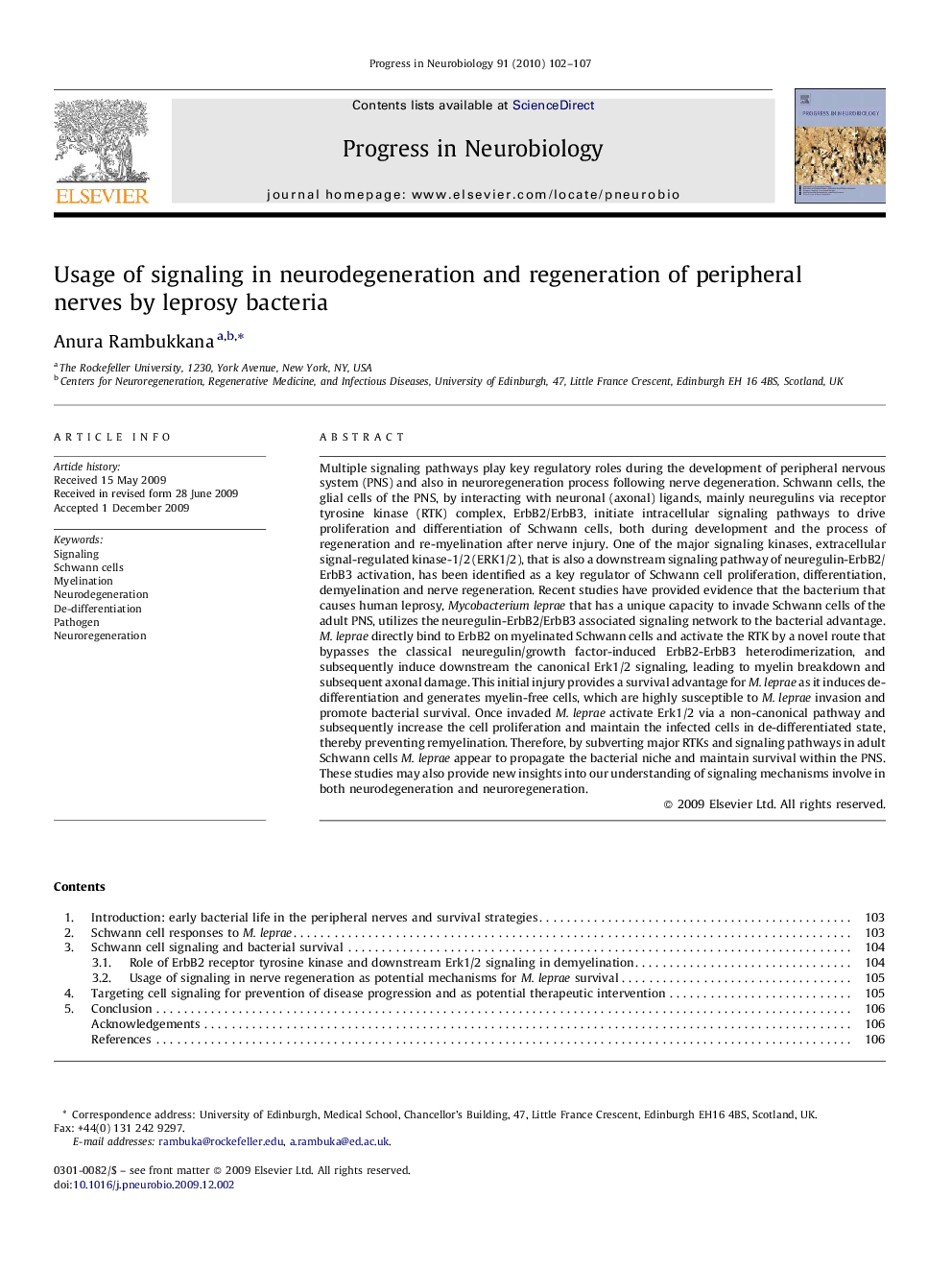| کد مقاله | کد نشریه | سال انتشار | مقاله انگلیسی | نسخه تمام متن |
|---|---|---|---|---|
| 4353616 | 1298481 | 2010 | 6 صفحه PDF | دانلود رایگان |

Multiple signaling pathways play key regulatory roles during the development of peripheral nervous system (PNS) and also in neuroregeneration process following nerve degeneration. Schwann cells, the glial cells of the PNS, by interacting with neuronal (axonal) ligands, mainly neuregulins via receptor tyrosine kinase (RTK) complex, ErbB2/ErbB3, initiate intracellular signaling pathways to drive proliferation and differentiation of Schwann cells, both during development and the process of regeneration and re-myelination after nerve injury. One of the major signaling kinases, extracellular signal-regulated kinase-1/2 (ERK1/2), that is also a downstream signaling pathway of neuregulin-ErbB2/ErbB3 activation, has been identified as a key regulator of Schwann cell proliferation, differentiation, demyelination and nerve regeneration. Recent studies have provided evidence that the bacterium that causes human leprosy, Mycobacterium leprae that has a unique capacity to invade Schwann cells of the adult PNS, utilizes the neuregulin-ErbB2/ErbB3 associated signaling network to the bacterial advantage. M. leprae directly bind to ErbB2 on myelinated Schwann cells and activate the RTK by a novel route that bypasses the classical neuregulin/growth factor-induced ErbB2-ErbB3 heterodimerization, and subsequently induce downstream the canonical Erk1/2 signaling, leading to myelin breakdown and subsequent axonal damage. This initial injury provides a survival advantage for M. leprae as it induces de-differentiation and generates myelin-free cells, which are highly susceptible to M. leprae invasion and promote bacterial survival. Once invaded M. leprae activate Erk1/2 via a non-canonical pathway and subsequently increase the cell proliferation and maintain the infected cells in de-differentiated state, thereby preventing remyelination. Therefore, by subverting major RTKs and signaling pathways in adult Schwann cells M. leprae appear to propagate the bacterial niche and maintain survival within the PNS. These studies may also provide new insights into our understanding of signaling mechanisms involve in both neurodegeneration and neuroregeneration.
Journal: Progress in Neurobiology - Volume 91, Issue 2, June 2010, Pages 102–107